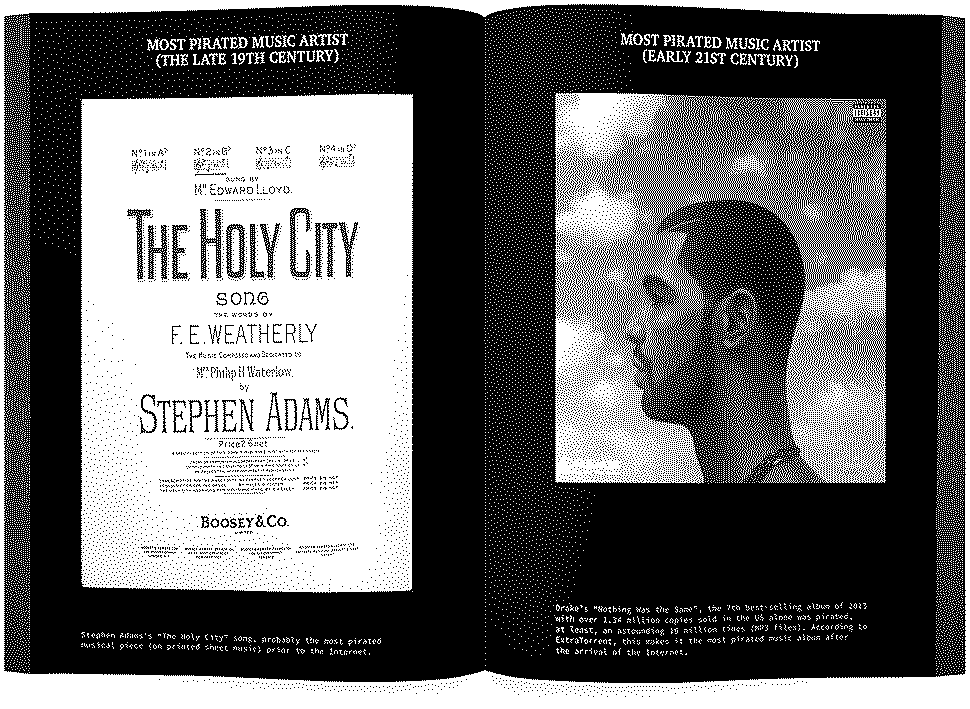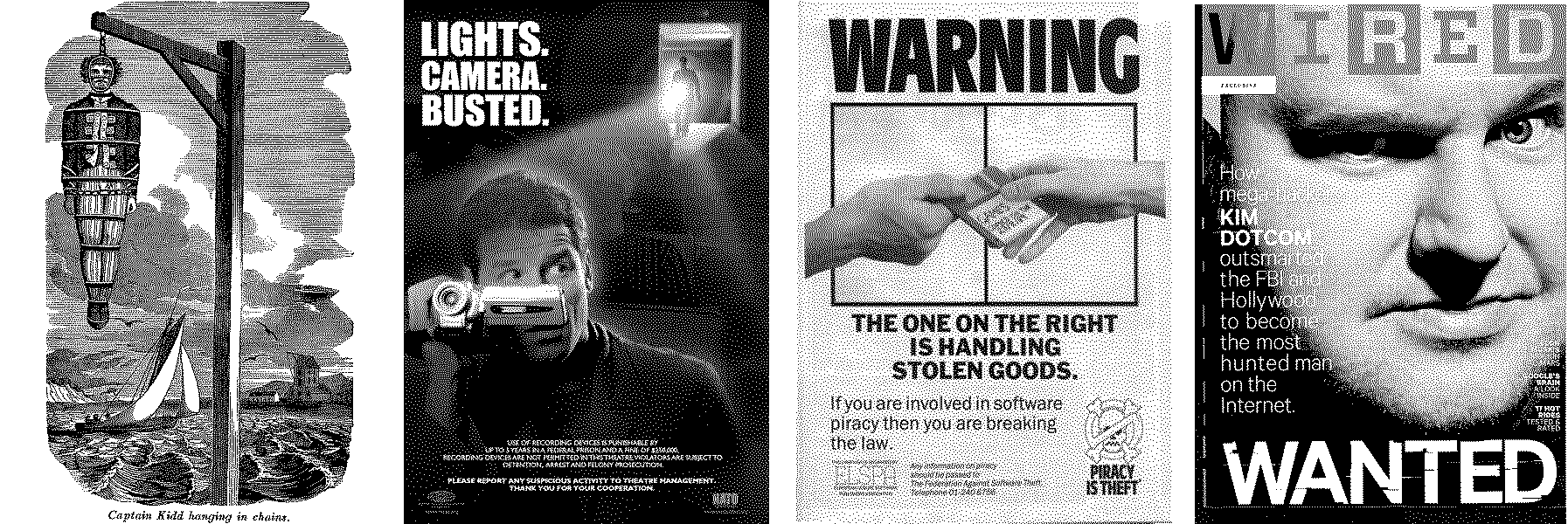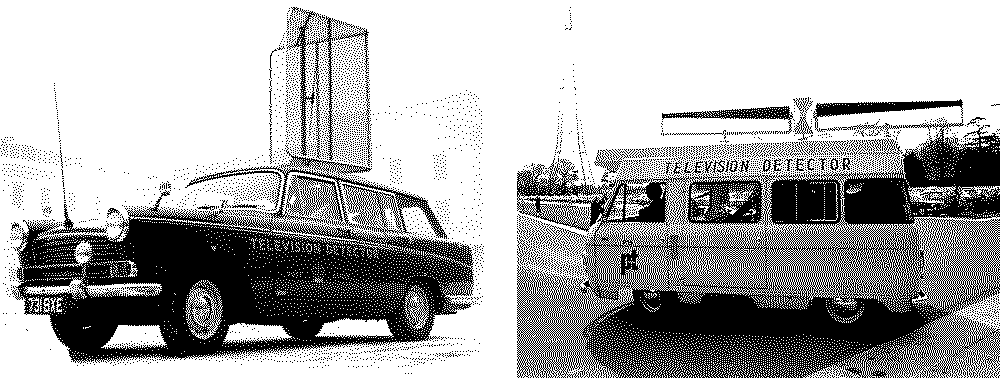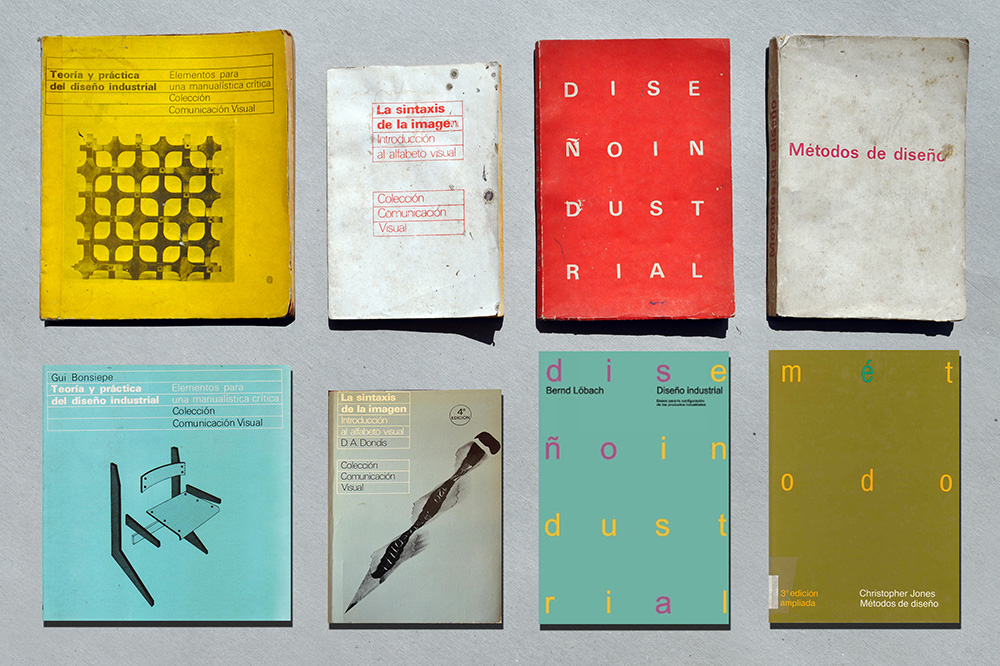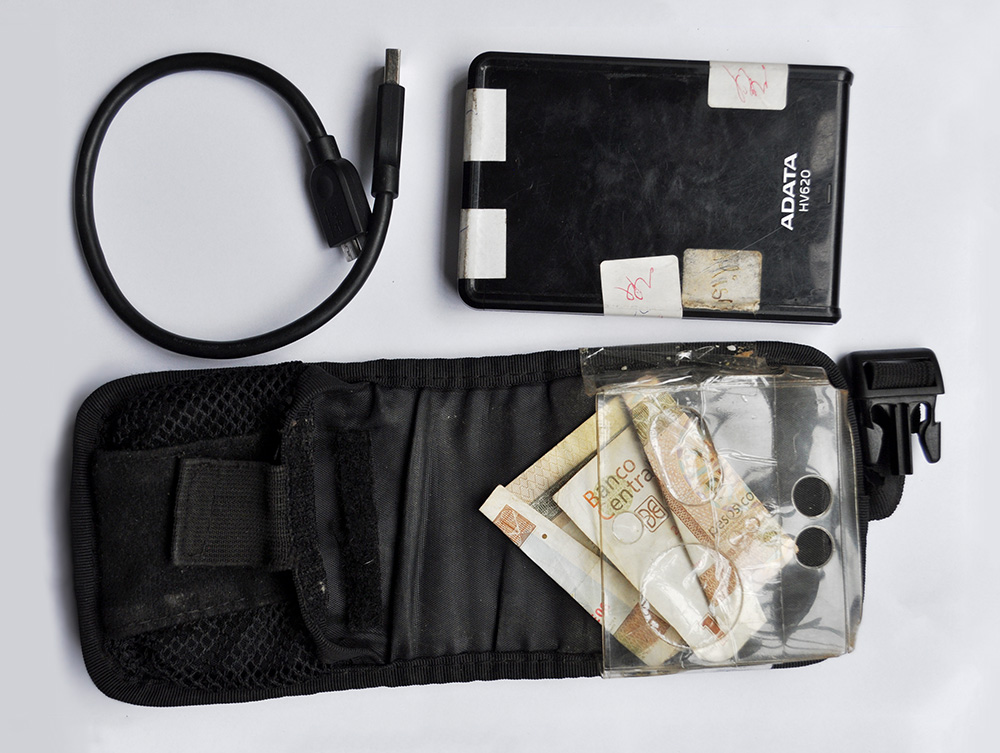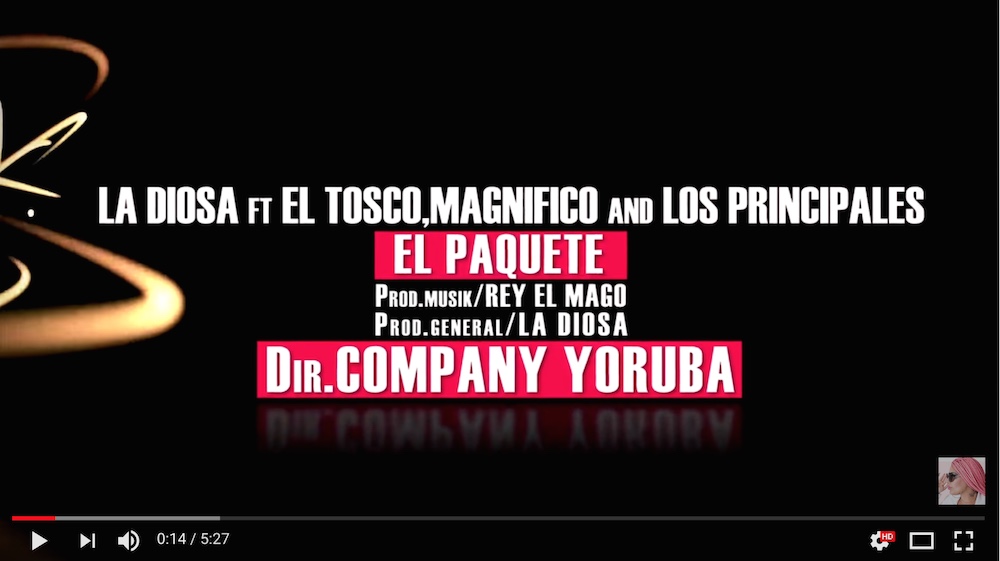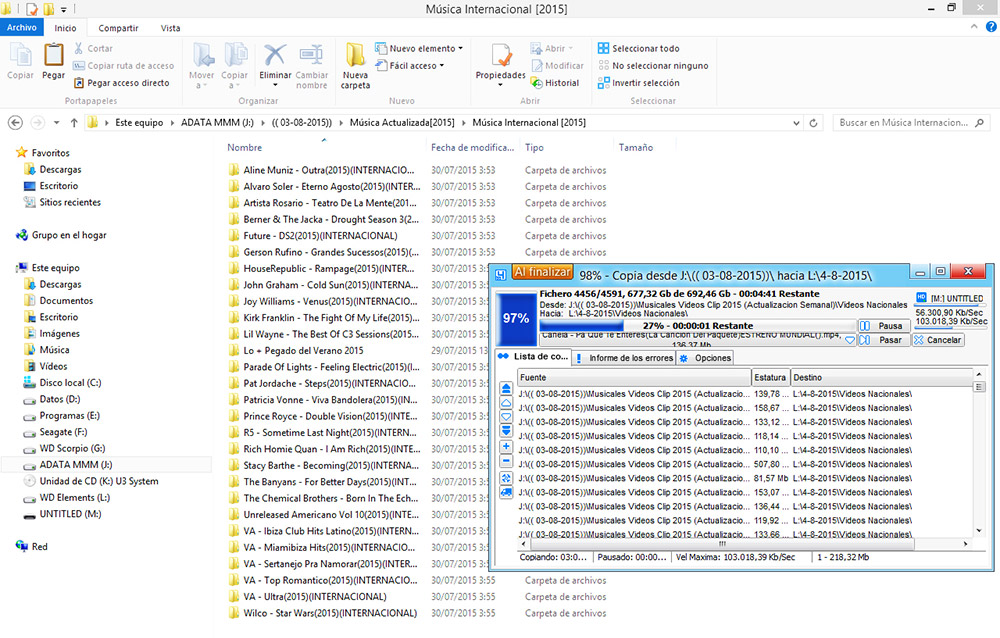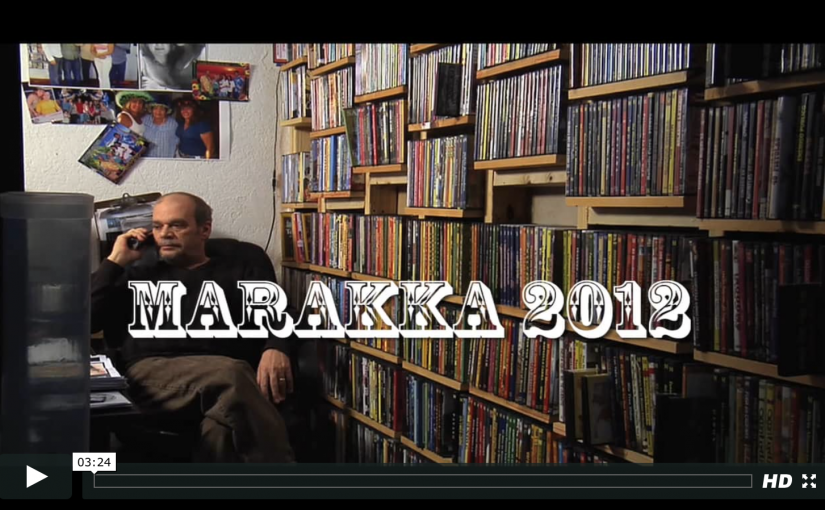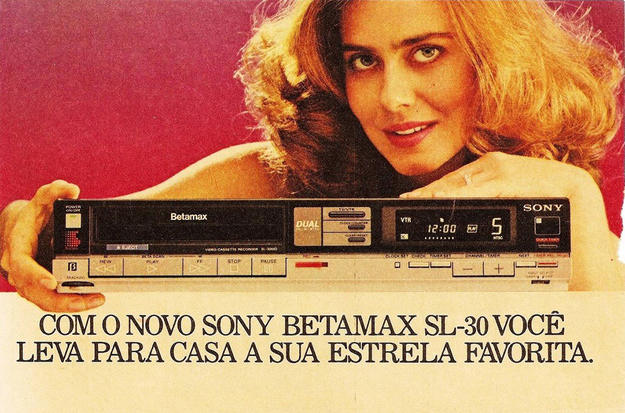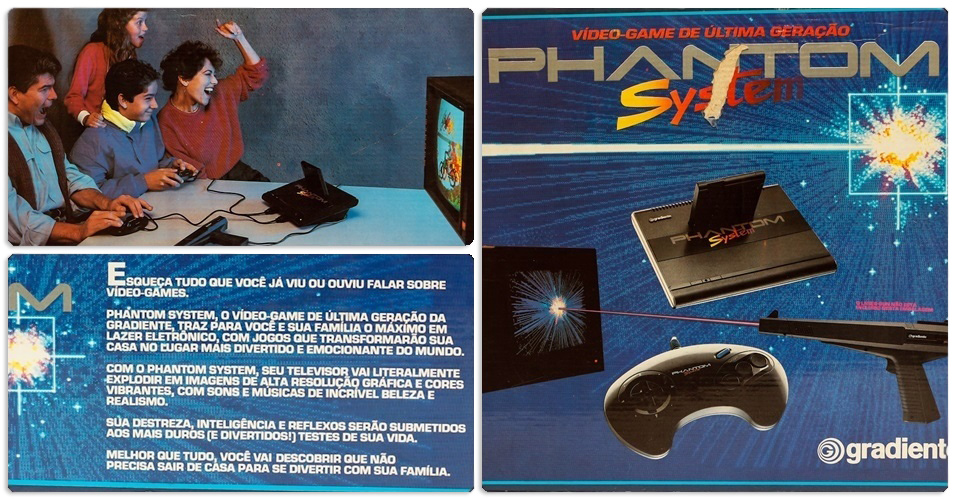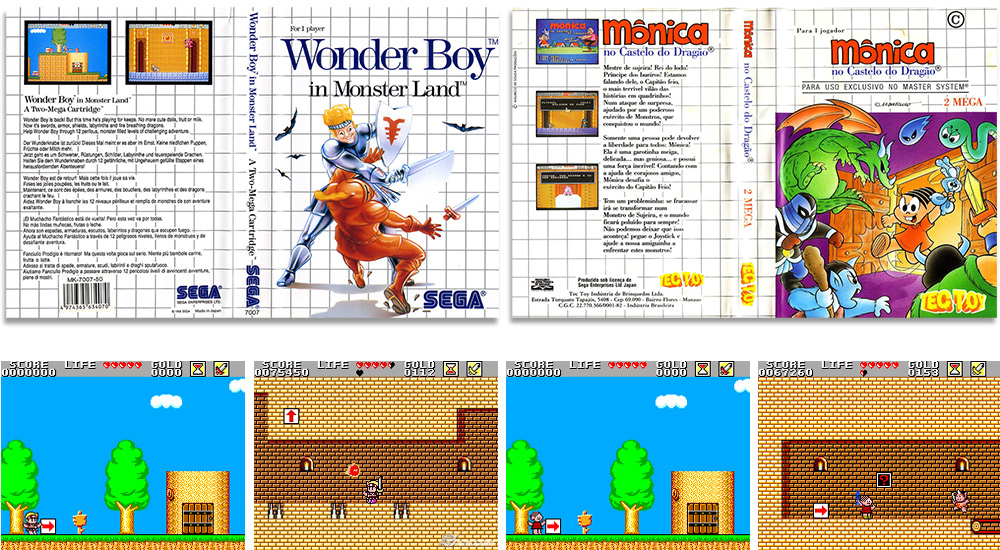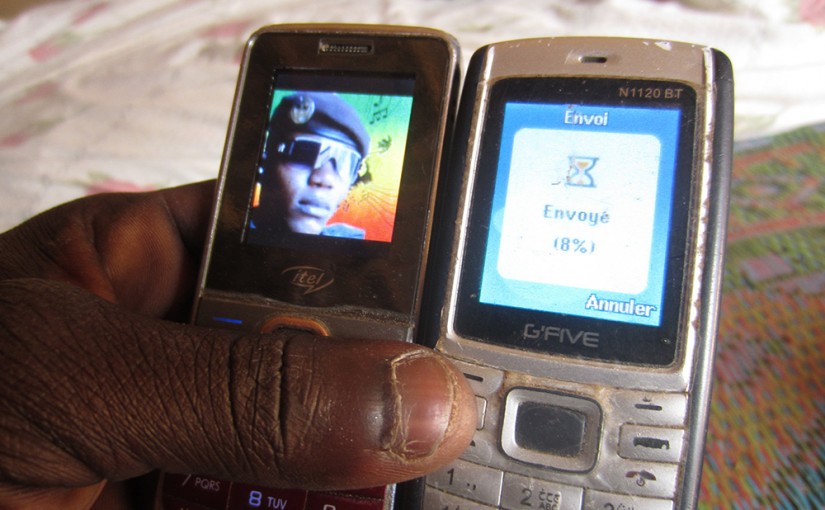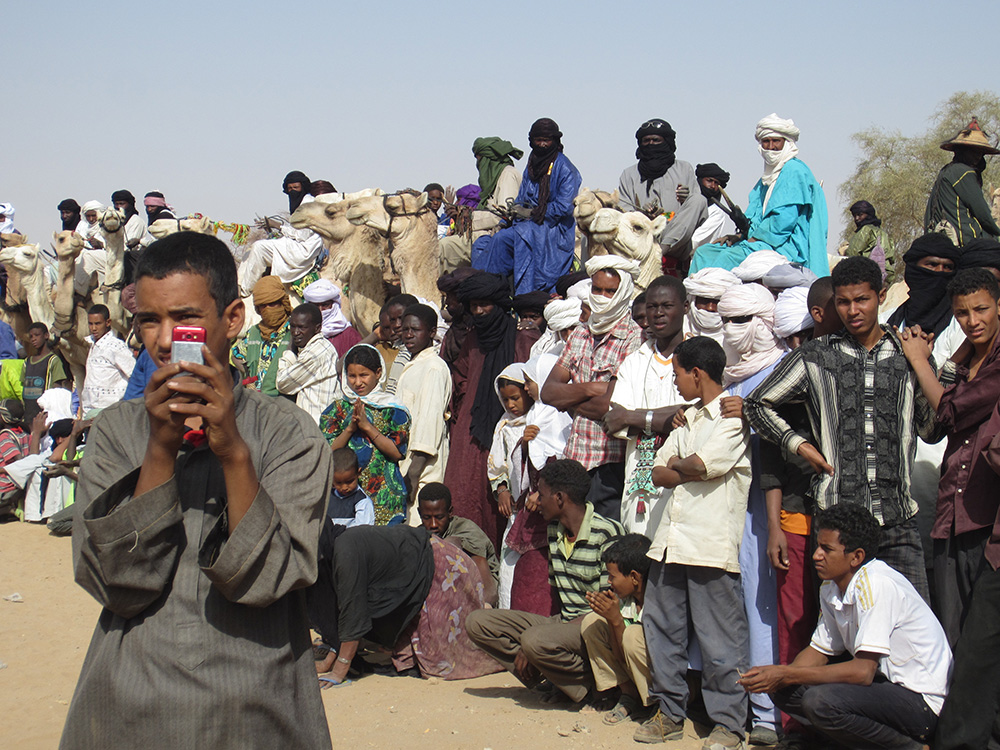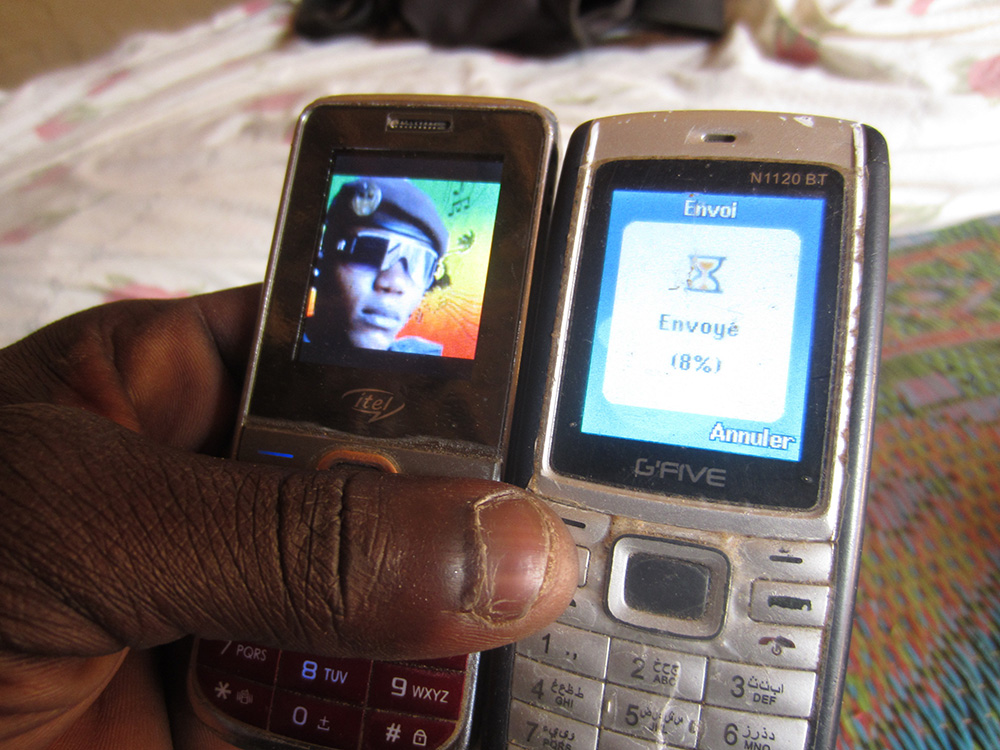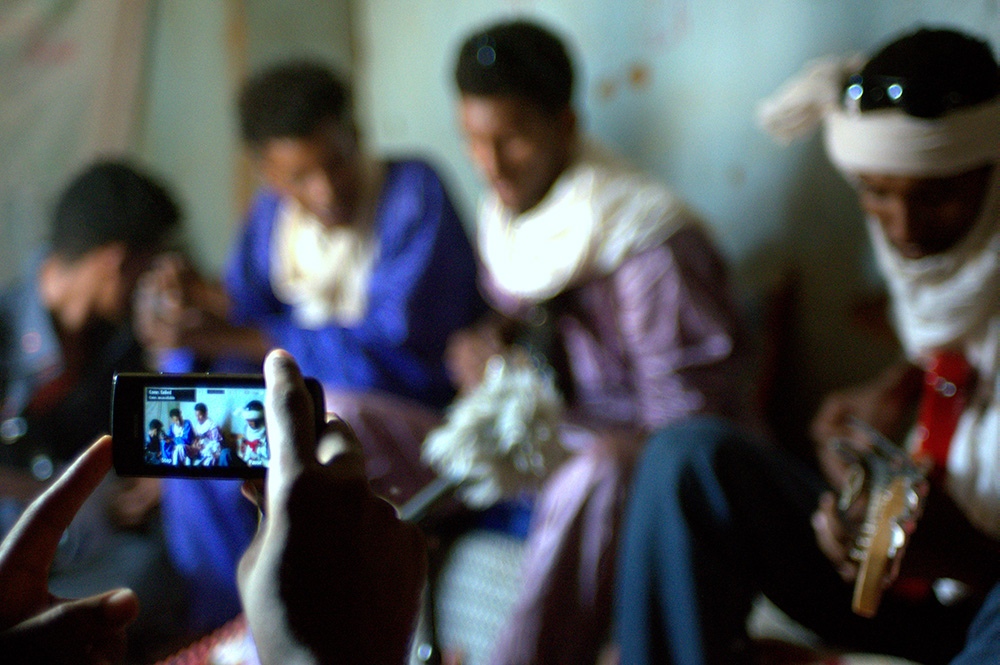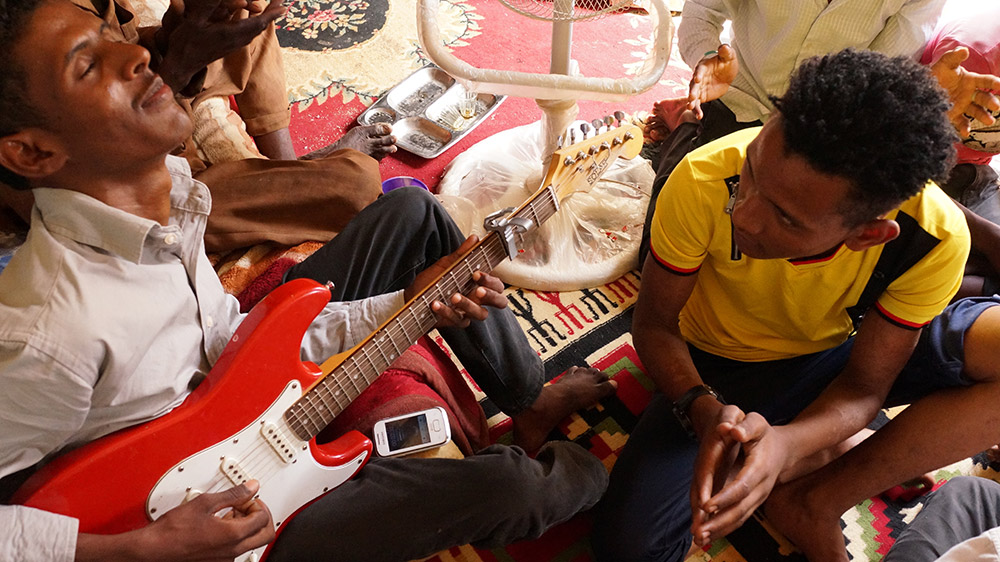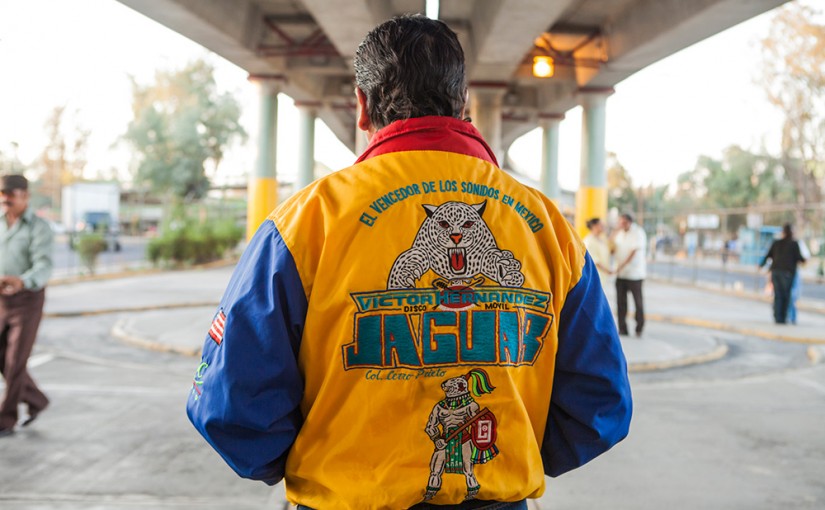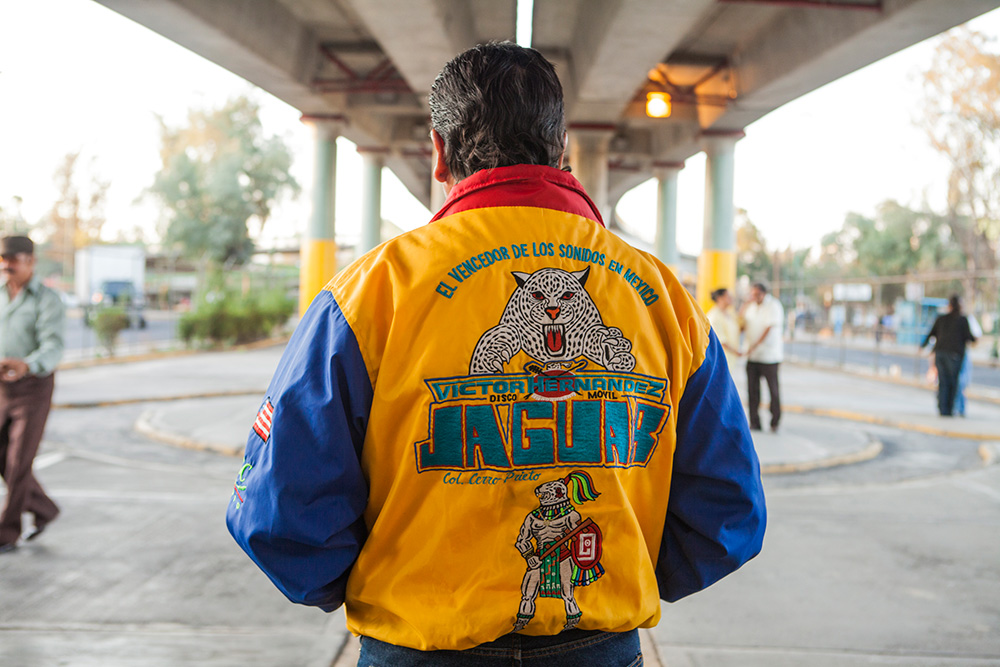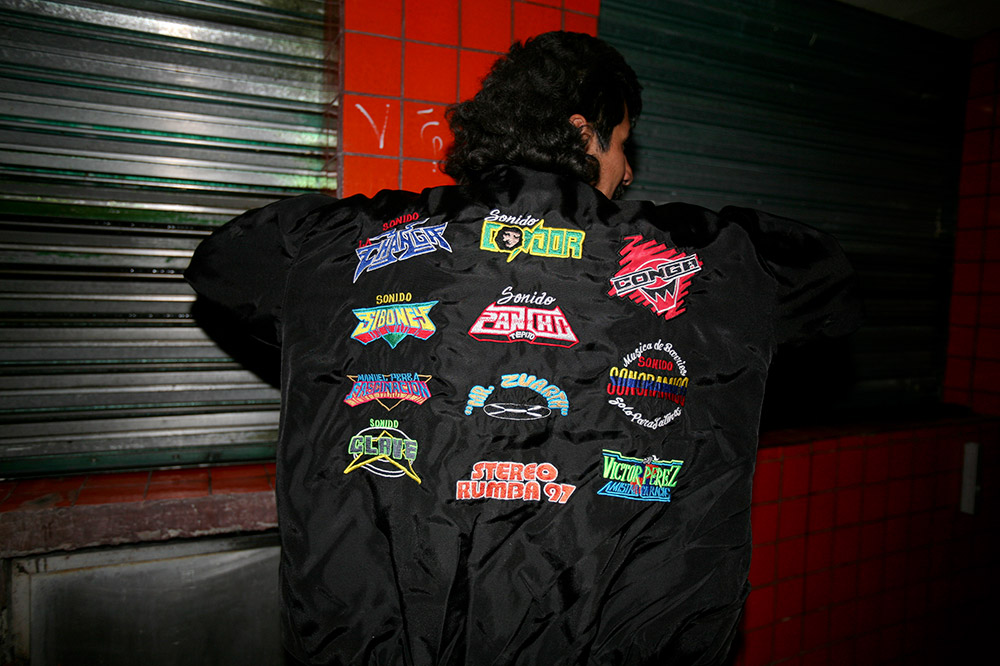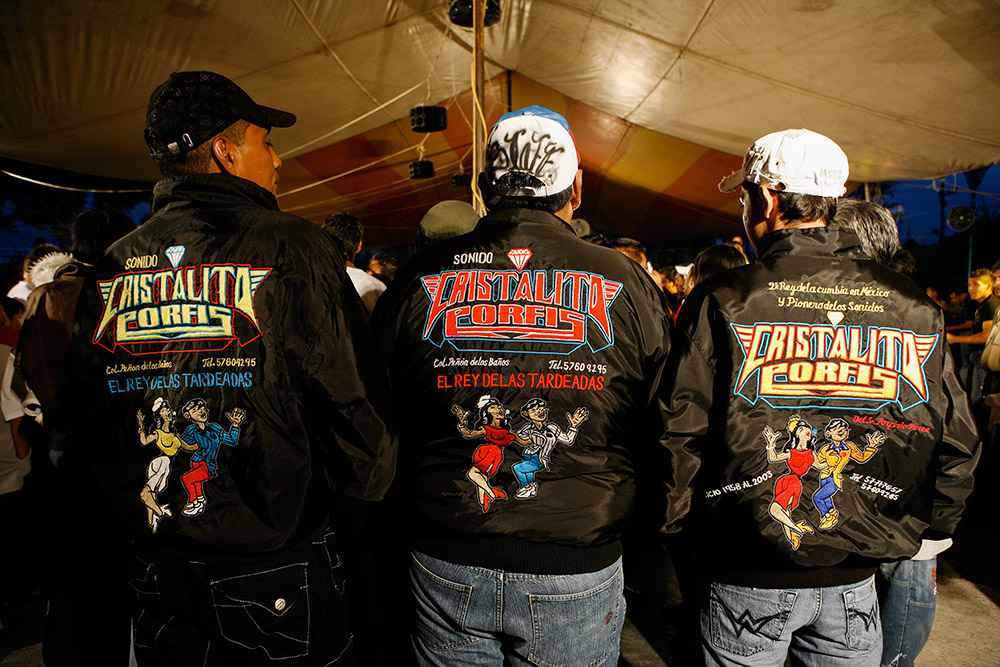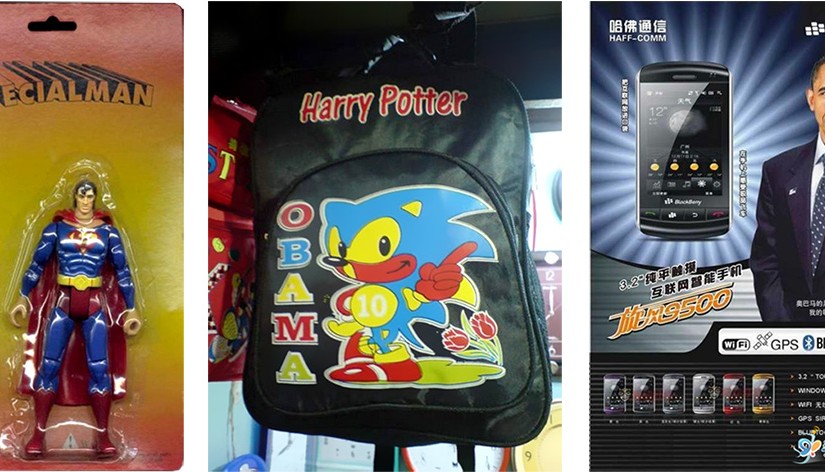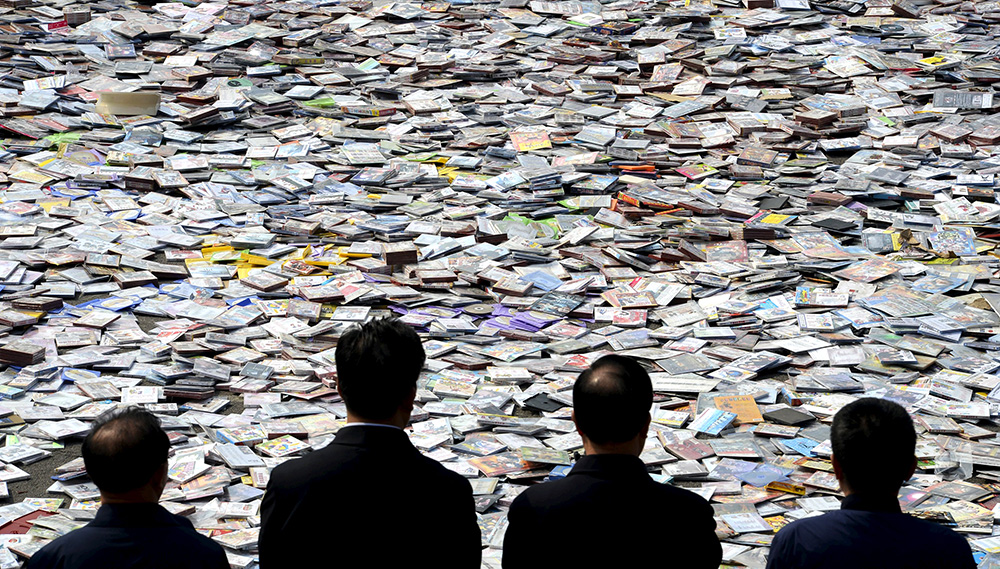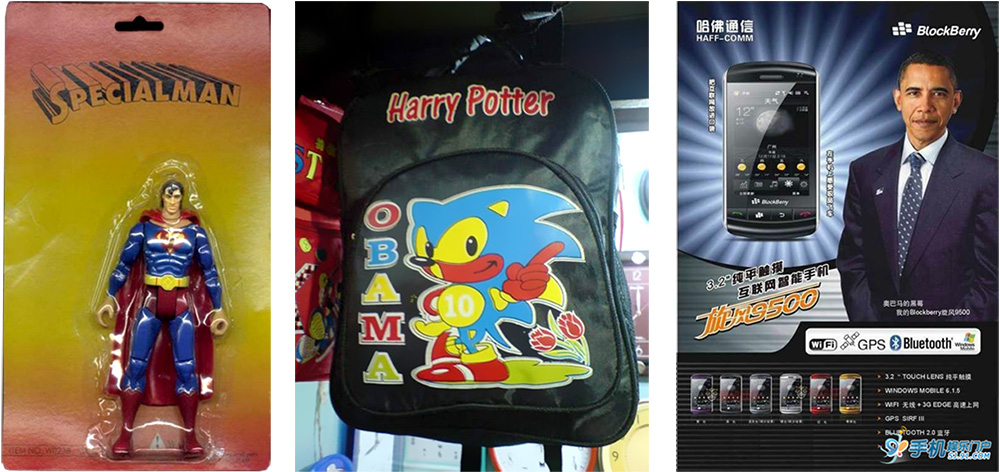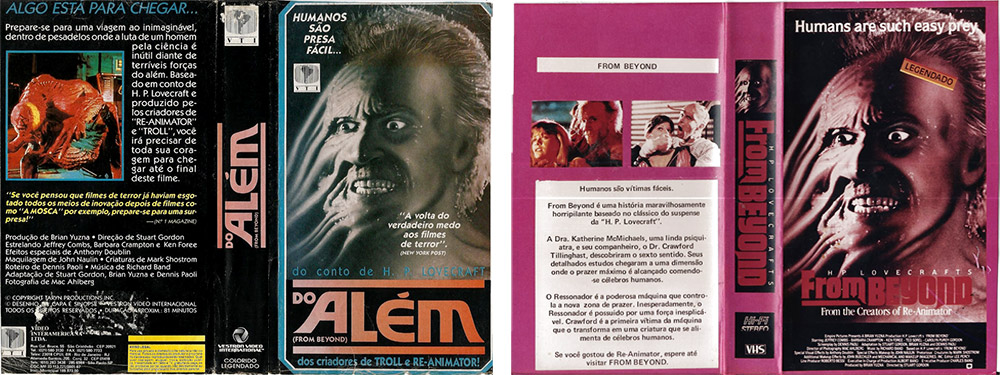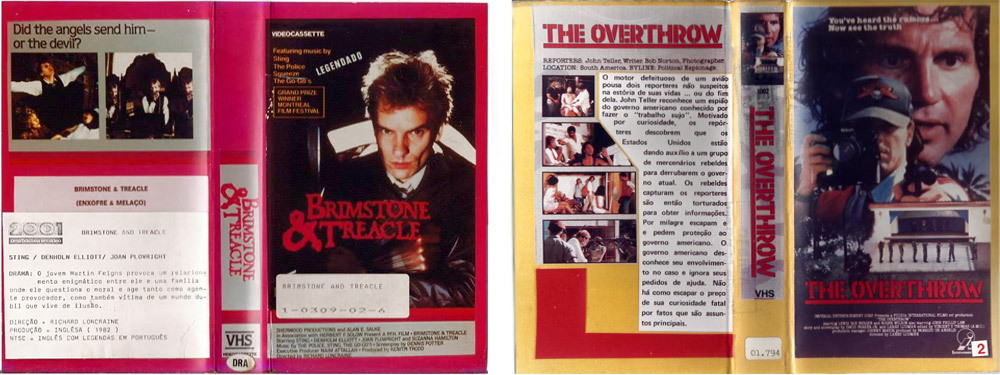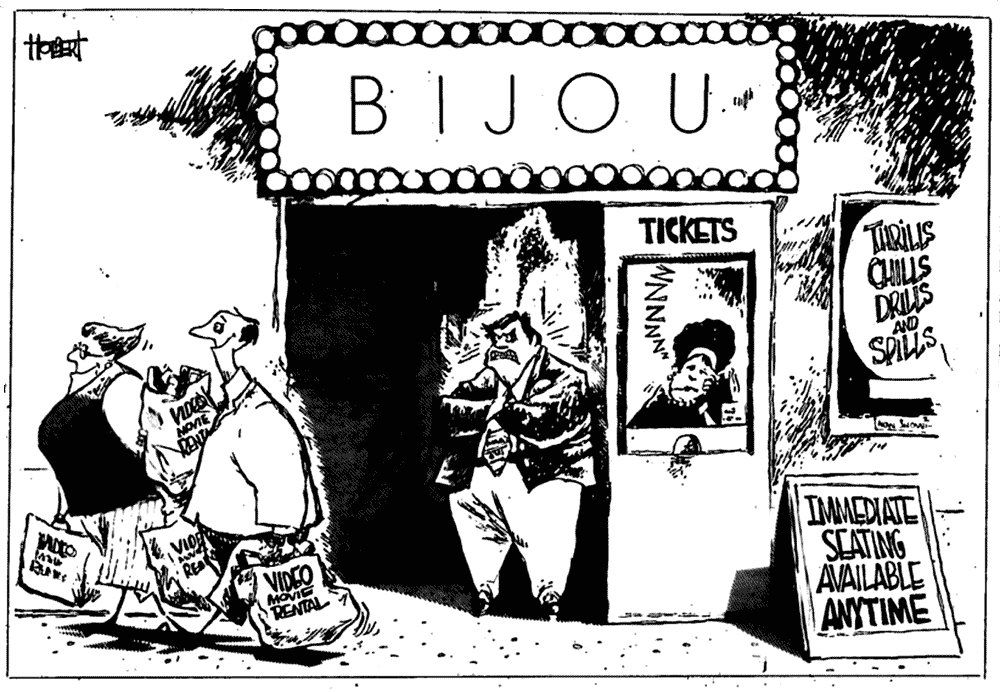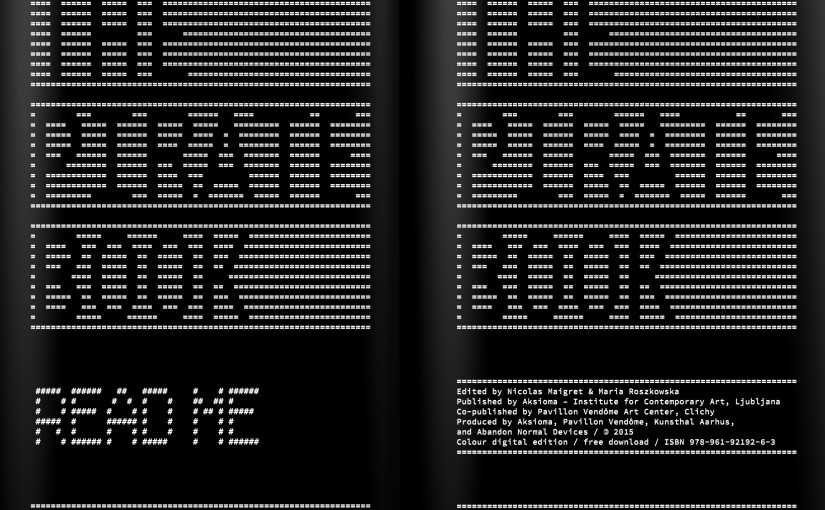by Ernesto Oroza | artist & designer
Excerpts from Marakka 2012, a documentary
by Magdiel Aspillaga and Ernesto Oroza, 2012
INTRODUCTION
Since 1983, Waldo Fernandez “Marakka”, who arrived in Miami as part the Mariel exodus (1980), has been assembling an archive of Cuban audiovisual memory. The collection, which functions commercially under the “Marakka 2000” brand, relies on and exploits a loophole created by current Cuba – USA diplomatic relations, and is sustained by a precise and astute understanding of current procedures regarding the protection of copyright in the USA. Each generation of emigrants has put its nostalgic claims to the archive, which has more than 14,000 objects. Waldo has processed all this material in order to add new credits, remove sensitive copyright issues, and even re-edit the dramaturgical time and pace of serials and soap operas in order to adjust them for suitable commercial formats. The pinnacle of the archive lies in the documentaries that Waldo himself has directed and edited using video clips and sounds from his collection.
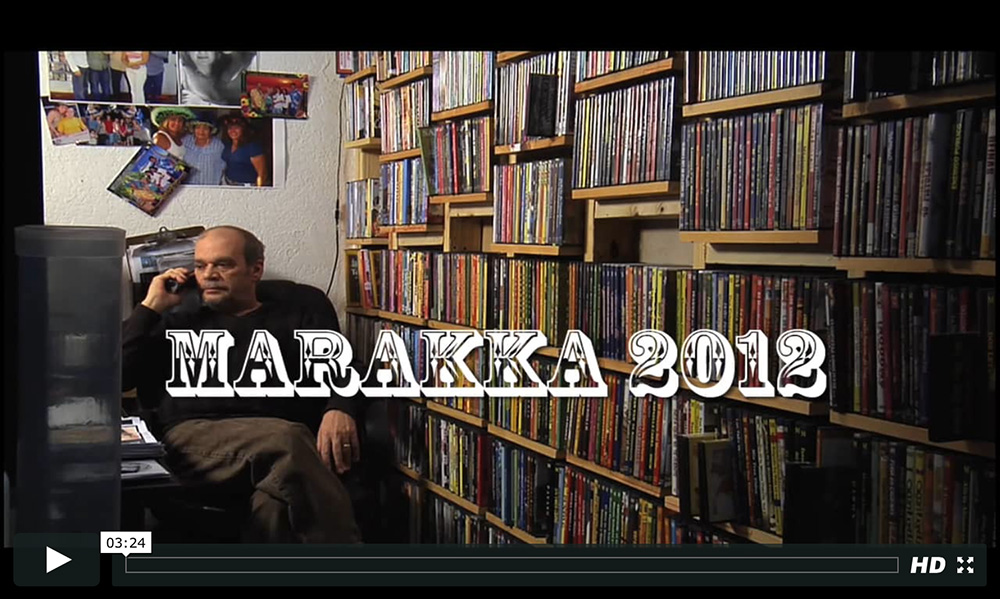
STARTING MARAKKA 2000
“It all began in 1983, a long time ago, as a result of nostalgia. One day, a man told me, ‘Hey, I have a Cuban film here.’ And I said to myself, ‘Wow! A Cuban film in the United States?’ It was The Man from Maisinicu. Then, I was overcome with nostalgia and I wanted to watch the movie. I had been in the U.S. for three years, and I was feeling a little bit homesick. “Back then, it was not like today when you can easily make a copy. I had to rent a VCR to make a copy of the video, a very bad copy by the way. It was so bad that you almost needed to include signs to recognize actors. But I watched it, and I felt homesick. Then, I said to myself, ‘If this happened to me that I don’t want to hear anything about Cuba, then everyone can feel homesick.”
“I’m an automotive electrician by trade. Cinema was a hobby for me. And, as I said before, I was overcome with nostalgia for Cuba, and I was eager to know and watch things about Cuba and to collect them. It was in the mid eighties when I realized that there was a business at hand, not only with Cuban films but also with Spanish, French, or any other movies that people watched in Cuba.”
“When I brought the first movie, I was a bit scared. I bought it in Puerto Rico. It was Se Permuta (House Swap). I bought hundreds of these movies in Puerto Rico. At first I was hesitant, but I sold them all in only one day. They would buy 20 and even 30 at the same time, and I said to myself, ‘What is this?’ It was then that I realized that there was a very good business in that. So, I started to get Cuban movies, and I sold more films from Cuba than from any other country. Se permuta was followed by Los pájaros tirándole a la escopeta (Birds Shooting the Shotgun), and the rest is history. I continued selling Cuban movies, and it was tremendous. And it is because of nostalgia that I began collecting things. Then, in 1987, I decided to sell my workshop, and I dedicated myself entirely to the film business. But, the time came when I reached the conclusion that it was better to sell only because today, once you rent something, they can make 10,000 copies just like I make them, and then it’s not a good business for me.”
“Normally, films came in VHS, the old video format. Later, I could get them in ¾-inch cassettes or 1-inch tapes. Then, with the arrival of DVD, everything was digitalized, and some other things we are getting in better quality. For example, some materials we had in VHS we managed to get in other countries with impeccable digital quality. That’s how the archive has been improving, and I can tell you that my archive is quite big. There’s not a similar one in the United States or in the rest of the world. Marakka has more than 14 or 16 thousand movies and documentaries from all over the world.”
LEGALITY
“Legally, I can have all these archives, and I can make as many copies as I want. I mean, there’s something called ‘public domain.’ The movies are not copyrighted in their entirety; the movies that were shot in Cuba 40 or 50 years are not copyrighted here in the United States. There are also co-productions between Cuba and other countries such as France, Spain, or Germany, for example, which are not copyrighted in the United States either, even though they were registered in Spain. Paying copyright fees to Cuba would be a violation of the embargo, the Torricelli Act, and other laws. So, it’s like an Internal Revenue Service inspector once told me: ‘We know who you are and what you do. You steal in an honorable way.’ And that’s what I do.”
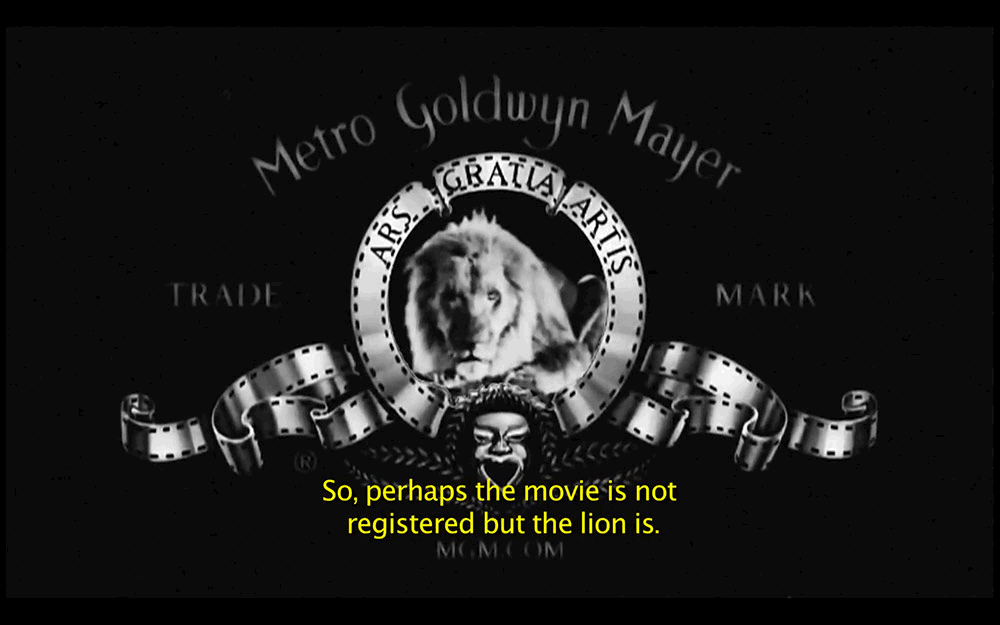
“You have a deadline to register a movie. You can register a movie now that was made 30 years ago, but it should not be like that because you have 6 months to register it, a movie, a book, anything – you have 6 months to do it. If you don’t do in that period of time, it becomes part of the public domain, and, if you register it later, you have to notify me and then, only after that, I have to respect the copyright. Unfortunately, Cuba does not respect anything. Throughout the years, Cuba has never respected copyrights, and we are only doing what they do. “There’s the case of many American films that are in the public domain, but they have, for example, the lion of the Metro Goldwyn Mayer studios. So, perhaps the movie is not registered, but the lion is. In that case, you eliminate the lion and you can use the movie. “You make a film in the United States, and you don’t register it. However, the Copyright Office automatically gives you the copyright because you made it. But, if I make a copy of it, you can’t do anything against me because you have not registered it. For you to be able to sue me, you have to register it first, and then, after that date, I don’t make any more copies. “I don’t see myself as a pirate because I have rescued sort of a culture here. In Cuba they might say that I’m a pirate because I make copies of anything that Cuba could profit from here in the United States. But, these things that I do against Cuba and in my favor are not illegal. I know I’m stealing; I know I did not make them, but the law protects me because these movies are not copyrighted in the United States.”
“Although I’m probably the biggest pirate here according to the people, I have also been affected by piracy because, for example, if I get a new Cuban movie now and I try to sell in on the street, I don’t sell more than 10. So, I don’t waste my time trying to sell them to video stores. What’s the use of it if, once they buy one from me, the next day you can find it all over the stores and even in the flea market for just 3 dollars? And that hurts. But, I also did it, and when I did it, I used to sell hundreds and thousands of copies. Today, anyone has 4 little machines in their stores, and they record and make copies of anything, and you can’t fight against that. I can’t fight against it. “There are things that people don’t copy for ethical reasons. But, in general, people copy everything. Marakka is not the only one who makes copies. There are 200 Marakkas in Miami. And, as the saying goes, the law is made to be broken. First, they invented the Macrovision copy protection system, but soon others came up with an anti-Macrovision machine. And the same goes for the DVDs. Everything can be pirated. “People come here and they buy documentaries, sometimes the ones I made. And they ask me: ‘Can we copy it?’ I look at them and I tell them: ‘No, you should not.’ But if you can copy it, even though I told you that you shouldn’t do it, you can do whatever you want with it after you buy it. There’s nothing on the face of the earth that cannot be copied.”
NAME & LOGO
“I was watching a movie and I saw the logo of Marakka, Marakka 2000, and I liked it. Then I checked it and it was not registered. So, I registered it and that’s the origin of the name. After that, Marakka was a success. People loved it. And sometimes they would tell me, ‘You will not get to the year 2000.’ But, it’s already 2011 and Marakka still exists.”
COVERS
“I make most of the covers. There are designs, photos that I take from the original pictures. Most of them are in English, so I change them to Spanish. I do it myself or someone working with me does it. It’s very easy to make a cover. I have made thousands and, on other occasions, I can also take a picture directly from the film and I use it as a cover.”
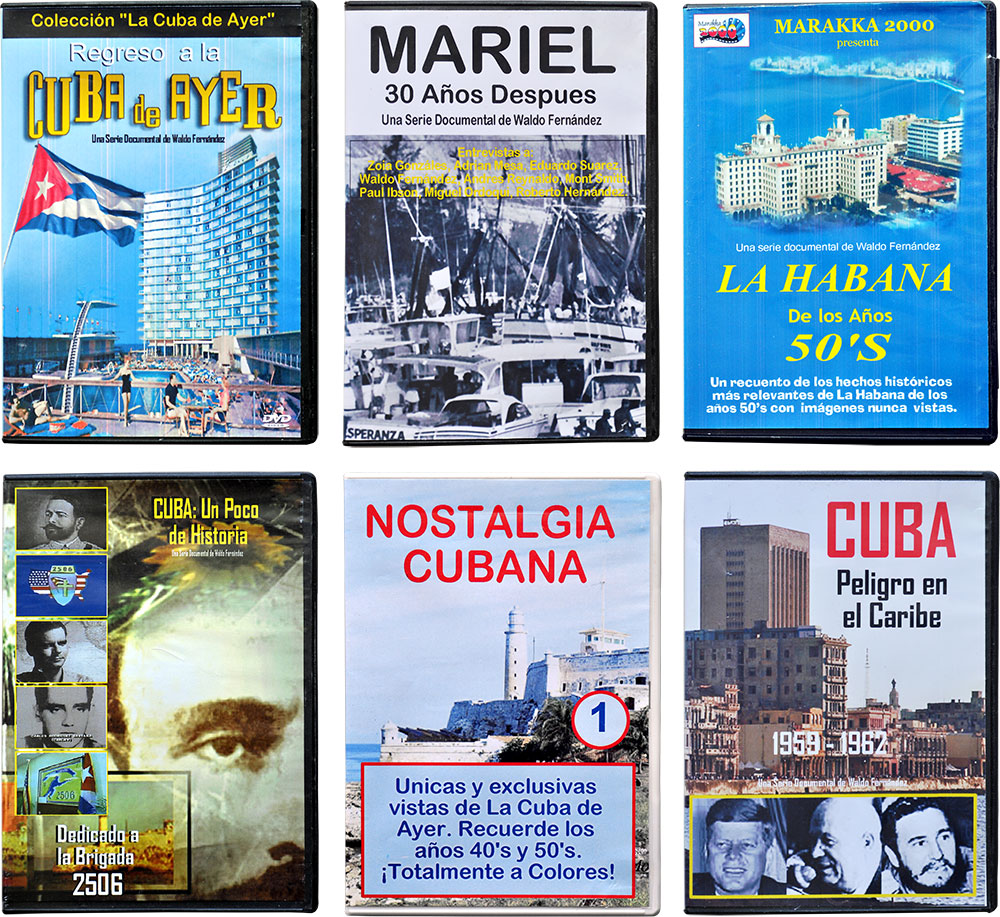
NOSTALGIA SERIES
“There are three volumes. The first one is from the old Cuban newscasts. It’s the only remaining color film material of Cuban panoramic views of the 1930s, 1940s, and 1950s, all before 1959. And the rest I got it from people who have traveled to Cuba, of movies that include parts of different landscapes. And then you get a piece from here and a piece from there, you edit it, and you make it like that, splicing them. “The first one was made during the time of the video cassette and the others, many years later, as a compilation. Cubans of all ages are the ones who buy this. You go to a fair that is held once every year, the Cuba Nostalgia convention, and there you can see very old people, even 80-year-olds, and very young ones too. Some of them go because they are overcome with nostalgia for what they didn’t know and some others because they feel homesick. So, people of all ages buy these materials until the present day.”
CHOPPED FILMS
“I call it ‘chopped film’ because first you choose a topic and then, out of the existing millions of movies, you have to extract excerpt by excerpt and splice them all in a one-theme material. That’s what I call ‘chopped film.’ What I did was the chopping. I took excerpt by excerpt. And this you can see in La Habana de los años 50 (The Havana of the 1950s) and in Cuba: Peligro en el Caribe (Cuba: Danger in the Caribbean). First, I have the idea of what I want to do and then I look for the material. I might be editing already and I remember that there is an excerpt in a film that could be useful and then I include it or change it. I know exactly which movie has what I need. For instance, you ask me for a man killing a lion. I have 17,000 films. I have thousands of the jungle, of Tarzan; there has to be a man killing a lion in one of them.”
ROTTEN MATERIAL
“Sometimes there are movies with their beginnings missing, so I include it. For example, if they were made by the Cuban Institute of Cinematographic Art and Industry (ICAIC), I add a screen reading ‘The Cuban Film Institute…’ and I add some music as well, so that they have a decent beginning. And I do the same with movies from anywhere in the world, with westerns, anything. And some others lack their final credits, and I add a sign ‘The End’ and some music, something like that.
I get rid of many scenes. I call them ‘stupid material.’ For example, if there’s a woman walking in the countryside, looking at the sky, and it goes on for minutes, I take it out. In soap operas, I eliminate the credits of each episode because, if they are in the first one and in the end, what’s the use of having them again, and again, and again? I edit them as if it were a movie and that’s how you eliminate material that doesn’t need to be there.
I have a lot of ‘rotten movies.’ Well, by ‘rotten’ I mean that they are very poor quality; they are very old movies, VHS films, with tracking, not digital. So, you get them with better quality, digital. But, perhaps somebody made a digital copy with a different name. Then, what you do is put its real name, the one it is registered under. I call ‘rotten’ all the material of very poor quality.”
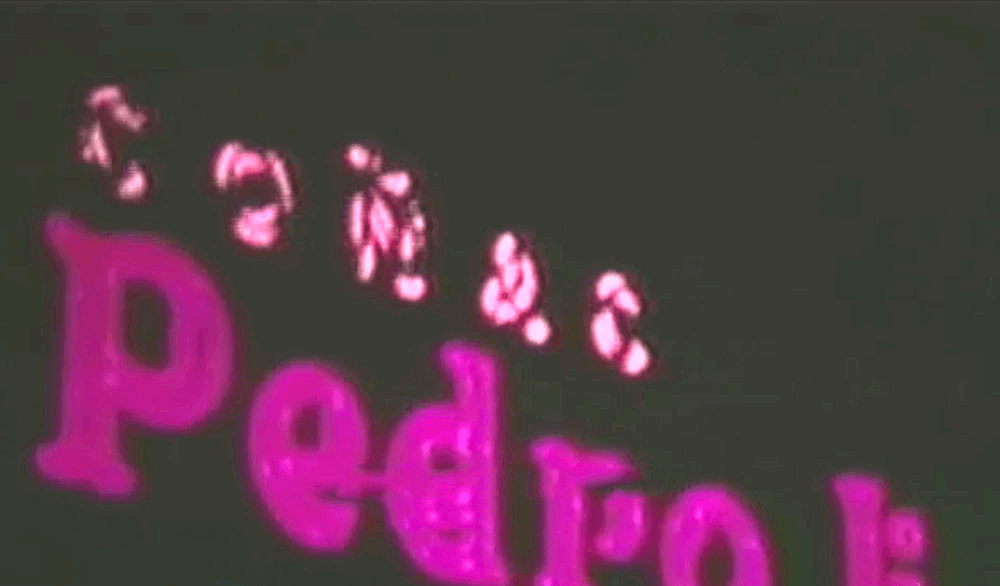
thepiratebook.net - 2015




